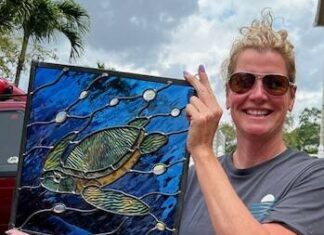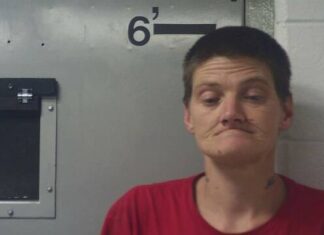A new procedure is being offered to cardiac patients at Meadowview Regional Medical Center.
The procedure, called transradial artery access, is an alternative cardiac catheterization to the transfemoral approach, which is administered through the femoral artery in the groin area.
The transradial approach for coronary angiography and angioplasty is gaining momentum in the medical community as a viable alternative to the transfemoral approach, according to an article by Dr. Jeffrey M. Schussler, with Baylor University Medical Center in Dallas.
Last week, Bob England of Augusta was the first patient in Mason County to undergo the transradial artery procedure, administered by Dr. Matthew Shotwell.
Shotwell relocated his Cardiovascular Consultants of Kentucky practice back to Maysville in November and is a physician on active medical staff with hospital privileges at Meadowview.
Cardiologist Dr. Eric Lohman of Ohio Valley Heart will also be offering this procedure at Meadowview.
The transradial approach uses the wrist to gain access to arteries that lead to the patient’s heart. Once access to the artery is made, the interventional cardiologist is able to perform either a diagnostic procedure, which determines if and where there are blockages that impeded the flow of blood to the heart muscle, or an interventional procedure (angioplasty) to open up the blocked artery.
According to literature provided by MRMC, each year more than a million cardiac catheterizations are performed in the United States, with most starting with a puncture to the femoral artery in the groin. While this is the most common approach, the entry point is sometimes difficult to access and has a greater associated risk of bleeding complications, especially in women, post-procedure pain and a slower recovery period. Post procedure, patients receiving transfemoral access are generally required to lie still for four to six hours while pressure is applied to the access area to ensure hemostasis (no further bleeding) before the patient can get up and walk around.
For certain types of patients, including obese patients, women and the elderly, and patients with peripheral vascular disease, transradial access provides documented reductions in bleeding complications, including hemotomas (swelling), less back pain and quicker recovery. In fact, patients treated with transradical access are able to sit up and walk around almost immediately after the procedure. As a result, these patients are more likely to be discharged faster than those treated with transfemoral access.
England, who is 73, said his experience of the transradial access was much better than his heart cath using transfemoral access seven years ago. He said Shotwell was his doctor then and the procedure was done at a Cincinnati hospital. The test showed England had blockage and three stints were put in his heart.
England said that experience “was a bit complicated” because he had bleeding after the heart cath and had to be hospitalized.
England said when he heard Shotwell had returned to Maysville, he scheduled a check up as “preventitive maintenance” and he was having shortness of breath.
He said his stress test was not normal and he needed further testing.
That led him to the decision to have the transradial access rather than the transfemoral access cath.
“I was awake, talking to the nurses … it seemed like no time at all,” he said, comparing the wrist access versus the groin access, where a patient must lie on a bed for six to eight hours with a sandbag on the leg to keep from moving.
“It was very inconvenient,” England said of the femoral artery access.
He said a new device that looks like a wide, clear plastic watchband was put on his wrist, to hold pressure on the artery. He said he was able to get up and move to a wheelchair right after the procedure was over and the pressure being applied to the vein was released a little at a time.
“It was really neat, I didn’t have to worry about a thing at all. We are very fortunate they have this new procedure. Recovery was so much better. I’m glad this technology has come to our area,” England said.
England said he had no soreness the next day or any other complications from the procedure and it was “amazing” how much better the new procedure is.
“It’s good to know we’ve got procedures like this around here and we don’t have to go to Lexington or Cincinnati, especially in an emergency. I’m certainly glad he’s (Shotwell) back and well trained in this area,” he said.






